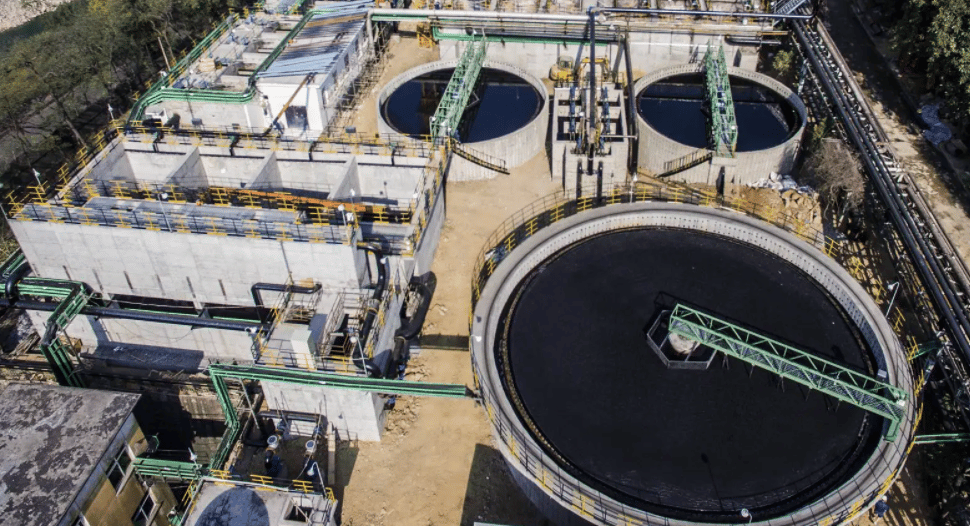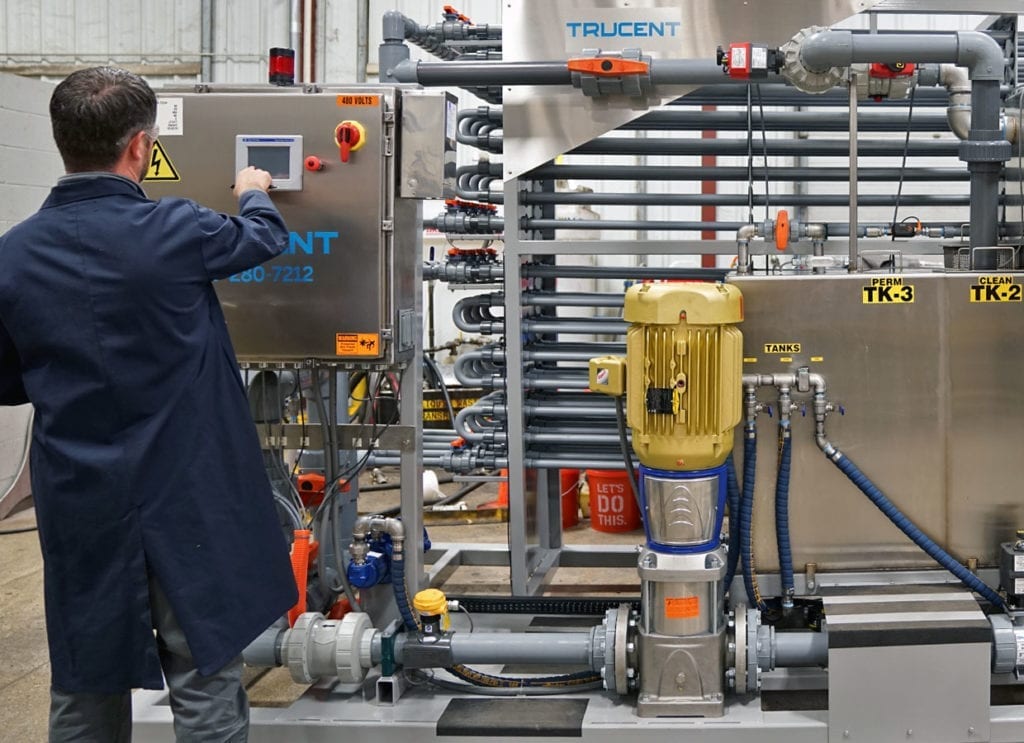Industrial Waste Water Treatment-- Eco-Friendly Solutions for Water Recycling
Wiki Article
Trick Methods in Industrial Waste Water Therapy Processes
The treatment of industrial wastewater is an important aspect of environmental monitoring, involving a series of methods designed to mitigate the effect of impurities. From the fundamental physical approaches that divide solids to the innovative chemical and organic processes that target specific pollutants, each strategy plays an important function in achieving water quality standards. Furthermore, improvements in technologies such as membrane filtration and progressed oxidation processes supply cutting-edge services for enhancing therapy effectiveness. Understanding exactly how these methods interconnect and their ramifications for sustainability raises vital questions concerning the future of wastewater administration in sector.Physical Treatment Methods
Just how efficiently can physical therapy methods attend to the intricacies of industrial wastewater? Physical treatment techniques play a crucial duty in the initial stages of wastewater monitoring, concentrating primarily on the removal of solids and large particulates. Methods such as sedimentation, flotation, and filtration are vital for decreasing the concentration of put on hold solids, consequently enhancing the efficiency of succeeding treatment processes.Sedimentation includes the gravitational settling of solids, permitting for the splitting up of larger materials from the wastewater. This technique is specifically effective in making clear water before organic or chemical therapies. Filtering, on the other hand, uses different media to catch particulate issue, making certain that smaller contaminants are eliminated. This method can be tailored to accommodate various sorts of industrial effluents, producing more clear effluent streams.
In addition, flotation protection techniques, which utilize air bubbles to raise put on hold solids to the surface for removal, are efficient in treating wastewater with high focus of fats, oils, and oils. In general, physical treatment methods work as an essential very first step in the extensive monitoring of industrial wastewater, making certain that the lots on subsequent therapy phases is lessened and enhancing overall therapy efficiency.
Chemical Therapy Methods
While physical treatment methods prepared for efficient wastewater management, chemical treatment methods are necessary for addressing the a lot more complex contaminants often located in commercial effluents. These approaches make use of different chemical agents to precipitate, counteract, or oxidize hazardous materials, making sure a much more complete removal of pollutants.
One common technique is coagulation and flocculation, where chemical coagulants such as aluminum sulfate or ferric chloride are added to advertise the gathering of suspended particles. This procedure improves solid-liquid separation, minimizing turbidity and boosting water top quality. Additionally, neutralization processes are used to adjust the pH of wastewater, making use of acids or bases to reduce the effects of acidic or alkaline streams, respectively.
Oxidation-reduction reactions play an essential role in degrading organic pollutants and virus. Chemical oxidants like ozone, hydrogen, or chlorine peroxide are made use of to damage down complicated natural compounds, making them less unsafe or much more naturally degradable. Advanced oxidation processes (AOPs) integrate several oxidation strategies to enhance toxin elimination performance.
Organic Therapy Processes
The performance of wastewater treatment is dramatically boosted by organic therapy processes, which harness the natural metabolic activities of bacteria to break down natural issue and get rid of pollutants. Industrial Waste Water Treatment. These procedures primarily include cardiovascular and anaerobic digestion, each tailored for certain sorts of wastewaterCardio therapy procedures use oxygen to support microbial development, advertising the malfunction of organic contaminants into co2 and water. Common methods include triggered sludge systems, where oygenation storage tanks assist in the mixing of wastewater with bacteria, and dripping filters, which urge biofilm growth on media surfaces.
Conversely, anaerobic therapy procedures occur in the lack of oxygen, utilizing anaerobic germs to disintegrate organic issue, leading to biogas production, a renewable resource source. Anaerobic digesters are usually used in industrial setups for this objective, properly minimizing the quantity of sludge while generating beneficial biogas.
The selection of a biological treatment technique depends on wastewater features, treatment objectives, and regulatory requirements. The assimilation of organic processes in wastewater therapy not just improves toxin elimination performance however likewise promotes sustainability by reducing chemical use and supporting resource recovery.
Advanced Oxidation Processes

Typical AOP techniques include Fenton's ozonation, reagent, and photocatalysis. Fenton's reagent, a combination of hydrogen peroxide and ferrous iron, catalyzes the development of hydroxyl radicals, making it reliable for treating wastewater containing phenolic substances and various other stubborn compounds.
AOPs provide several benefits, including decreased sludge production and the capability to treat wastewater with high concentrations of organic pollutants. However, the application of AOPs calls for cautious consideration of functional specifications and cost-effectiveness, making certain that these advanced strategies are properly integrated into existing wastewater therapy systems.
Membrane Layer Purification Technologies

Microfiltration works for removing put on hold bacteria and solids, while ultrafiltration targets smaller sized natural molecules and infections. Nanofiltration connects the space between ultrafiltration and reverse osmosis, efficiently eliminating natural compounds and divalent ions. Reverse osmosis offers her response the highest possible degree of filtration, utilized largely for desalination and getting rid of mono-valent ions.
Membrane technologies provide countless advantages, consisting of low power consumption contrasted to standard therapy approaches, modular design for scalability, and the capacity for water recovery and reuse. Challenges such as membrane layer fouling and the requirement for routine upkeep should be dealt with to make certain system efficiency. On the whole, membrane layer filtering modern technologies represent an essential component of modern commercial wastewater therapy approaches, advertising sustainability and resource preservation in water administration.
Verdict
In final thought, industrial wastewater treatment uses a varied range of strategies, including physical, chemical, organic, and advanced methods. Proceeded improvements in these approaches will further boost the effectiveness and performance of wastewater treatment processes in commercial settings.The therapy of commercial find out this here wastewater is a critical element of ecological management, including an array of techniques made to reduce the impact of impurities.How efficiently can physical therapy approaches address the intricacies of commercial wastewater?Advanced oxidation procedures (AOPs) stand for an advanced approach in commercial wastewater treatment, developed to efficiently deteriorate organic toxins that are commonly immune to standard therapy methods (Industrial Waste Water Treatment).In final thought, commercial wastewater treatment uses a diverse variety of techniques, consisting of physical, chemical, biological, and advanced approaches. Continued improvements in these methods will certainly further improve the efficiency and efficiency of wastewater treatment processes in industrial setups
Report this wiki page